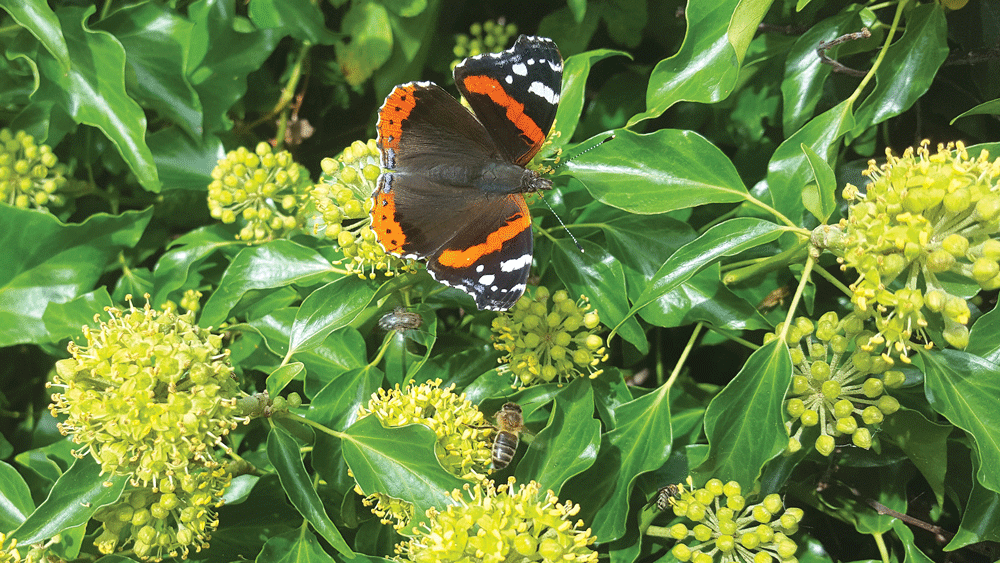
Nature on our doorsteps: Ivy, a keystone species
Rosaleen Dwyer is the County Heritage Officer at South Dublin County Council – every week she gives us an insight into nature on our doorsteps and the beautiful biodiversity of its plants and wildlife.
In nature, certain species can be referred to as being ‘keystone species’. This means that their presence has a very large impact on their environment and on the other species that live there.
Without them, their environment would change, and not always for the better.
The term originates from the central stone in the top of a stone arch. If this is removed, the arch collapses.
Keystone species are often predators that keep the number of other species under control. Wolves, for example, hunt and eat grazing animals like deer, elk, and rabbits.
Without wolves, the constant nibbling of grazing animals changes the landscape. Tree seedlings cannot grow and woodlands do not expand.
This reduces the diversity of birds, insects, and other small mammals.

Late season Red Admiral butterflies sip Ivy’s rich nectar
Also, without trees and woodlands to soak up rainfall, the potential for flooding and soil to wash away increases.
Without the wolf as the keystone species, the habitats and species in its landscape change.
Not all keystone species are predators. Plants, algae, or fungi can also act as critical links, where their presence supports many other species that either feed upon them or that live amongst them.
In Ireland, one such common keystone plant species is Ivy.
Ivy provides a wide range of benefits to biodiversity.
Its dense growth offers a home for many insects and spiders, while wrens, robins, and bats will roost or nest amongst its leafy branches.
Ivy is particularly important at two challenging times of the year, in late autumn and late winter.
Because Ivy flowers in September and October, it extends the pollen and nectar season into late autumn for honeybees, bumblebees, wasps and butterflies.
Then, in early January and February when other hedgerow berries are long gone, Ivy’s purple-black berries are a lifeline for birds trying to survive until spring.
Ivy is therefore a very important local keystone species. Without it, many other species would be badly affected.

